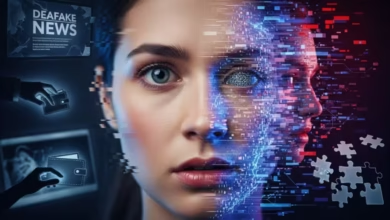Deepfake Legislation and Democracy

In 2025 something changed: national lawmakers and courts moved from debating deepfakes as a “future threat” to treating them as present dangers to public discourse. Italy’s new national AI law introduced criminal penalties for harmful deepfakes, while a high-profile AI-generated political clip in the U.S. reignited worries about manicured misinformation spreading in real time. Together, these developments make deepfake legislation and democracy 2025 a live public-policy problem rather than an abstract discussion. eWeek
Why does this matter now? Because when manipulated media and fast distribution meet loose or unclear rules, the result is confusion at scale: voters unsure what to trust, platforms scrambling to moderate, and courts grappling with free-speech trade-offs. The next sections explain what laws are doing, where they fall short, and how policymakers and platforms can act this year.
What Recent Developments Tell Us
Several key signals push this topic into the spotlight:
- Italy’s national AI law places new legal teeth behind misuse of AI, including deepfakes used to harm individuals or public discourse. That marks a decisive national step in Europe. eWeek
- High-visibility deepfake incidents—including a recently circulated AI-generated political clip—demonstrate how quickly manipulated media can enter mainstream channels and influence narratives. The Daily Beast
- U.S. litigation and court rulings remain mixed: some state efforts to ban or restrict political deepfakes face constitutional challenges, complicating a uniform approach. Pew Research Center
- EU-level rules (and the AI Act’s transparency measures) push platforms toward labeling and provenance requirements that make synthetic media easier to trace. realitydefender.com
These signals together mean regulators, technology companies, and civil society are no longer planning for a possible future—they must manage a present problem.
How Laws Try to Stop Deepfakes – Three Policy Models
Policymakers take three broad approaches; each has trade-offs:
- Criminalization and penalties (e.g., Italy): impose fines or jail for producing or distributing harmful deepfakes. Strength: deterrence. Risk: overbreadth and chilling effects. eWeek
- Transparency and provenance rules (EU-style): require labels, metadata, and disclosure when content is AI-generated. Strength: retains speech while improving context. Risk: enforcement complexity and metadata-stripping. realitydefender.com
- Platform liability + disclosure at scale (some U.S. state bills): put the onus on platforms to detect and act—but courts sometimes push back on restrictions tied to political speech. Strength: practical leverage; Risk: First Amendment challenges. Pew Research Center
No single model solves everything. Good policy will likely combine parts of each—criminal penalties for malicious, targeted abuses; mandatory provenance for all synthetic content; and platform duties for faster takedown and labeling.
Policy Approaches at a Glance
| Policy model | What it does | Benefits | Key weaknesses |
| Criminal penalties | Fine / imprison creators of malicious deepfakes | Strong deterrent | Risk of chilling legal expression; enforcement burden |
| Provenance & labels | Require metadata/labels on generated media | Transparency, traceability | Metadata can be removed; cross-border gaps |
| Platform duties | Detection, takedown, notice & appeal | Speed of response | Legal challenges, inconsistent enforcement |
Why Democracy is Uniquely Vulnerable
Elections and civic debate are fragile. Deepfakes can distort the information environment in four ways:
- Timing: a convincing fake released close to a vote leaves little time for correction.
- Emotion: manipulated content is often crafted to inflame, not inform.
- Credibility erosion: repeated falsehoods reduce overall trust in institutions and news.
- Scaling attacks: bots and agents can amplify a single deepfake to reach millions within hours.
Research and watchdogs (e.g., Brennan Center) warn that while deepfakes have not yet decisively swung major elections, the potential harm is real and cumulative—especially when detection lags and legal responses are slow. Brennan Center for Justice
Enforcement Problems & Technical Workarounds
Even with good rules, enforcement is messy:
- Jurisdictional gaps: cross-border hosting and distribution mean a harmful video can be created in one country and posted from another.
- Metadata stripping: bad actors can remove provenance tags or re-encode media to hide origins.
- Adversarial generation: generative models evolve fast; detectors lag behind.
- Legal pushback: some bans get struck down or narrowed by courts on free-speech grounds. Pew Research Center
Therefore, law must be paired with robust technical standards (provenance schemas, watermarking, tamper-evident logs) and international coordination.
What Policymakers and Platforms Should Do Now
For policymakers
- Require machine-readable provenance for AI-generated media and fund open verification tools.
- Criminalize targeted disinformation that demonstrably harms individuals or election integrity, with narrow, evidence-based definitions.
- Build rapid notice-and-takedown pathways that respect due process.
For platforms
- Implement provenance ingestion and surface labels clearly to users.
- Run rapid-response teams during election windows and publish transparency reports.
- Invest in detection R&D and partner with independent fact-checkers.
For civil society & journalists
- Build rapid verification hubs and public education campaigns about deepfake literacy.
- Maintain archives of debunked deepfakes to speed corrections.
This mix—law, tech, and public education—reduces harm faster than any single measure alone.
A Short Case: When Regulation Collides With Courts
In 2025 some U.S. state deepfake restrictions faced judicial pushback, citing First Amendment concerns. At the same time, Italy moved forward with criminal penalties, and the EU pressed platforms on labeling. That contrast matters: if domestic courts restrict content rules unevenly, bad actors will exploit safe havens to seed disinformation internationally. The policy lesson is clear: national laws help, but cross-border cooperation and shared technical standards are essential. Pew Research Center
Practical Communication Tips for Leaders
- Proactively label organizational communications: conservative disclosure beats reactive denial.
- Invest in staff training on verification during high-risk periods (elections, crises).
- Build a “calm communications” plan: when a fake circulates, rapid, transparent rebuttals work best.
An Honest, Practical Verdict
Deepfake legislation and democracy 2025 is not an academic question: it’s immediately practical. New laws and high-profile incidents show governments and platforms are testing different remedies—some heavy-handed, some transparency-first—but the common thread is urgency. Effective protection of elections and public trust will require a hybrid strategy: targeted penalties for malicious creators, mandatory provenance and labeling, stronger platform duties during high-risk windows, and public literacy campaigns. Above all, policy must be narrowly tailored, globally coordinated, and technically grounded to avoid chilling speech while blocking real harms.
If policymakers, platforms, and civil society work together now—fast, but carefully—we can preserve the open information commons without surrendering it to automated manipulation.
For similar articles, please visit: AI and Society
Homepage / humanaifuture.com




